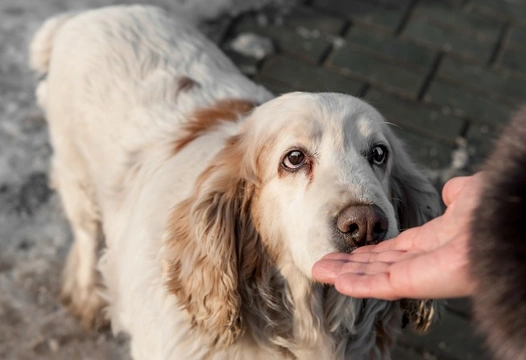
What makes a dog choose to approach a certain person?
Whilst a lot of dogs are really friendly and often have to be stopped from trotting up to everyone they meet with a cheerful wag in the hopes of getting a pat, other dogs are a lot more shy, wary or speculative, and can take a while to warm up to a person.
However, just as every person is an individual, so too is every dog – and many people who own a shy or generally reticent dog will find themselves surprised now and then because their usually stand-offish dog deliberately approaches a specific person for no obvious reason, when they would usually keep them at a distance or avoid them altogether.
Some people in particular tend to be dog magnets, and are easily able to encourage a shy dog to approach them, sometimes without making any obvious effort – and of course, other people will have a certain x-factor that seems to make them appealing to specific individual dogs.
The reasons why any given dog picks out one person can be numerous and varied, and you’ll never know for sure what is going on in your dog’s mind – but there are a number of factors that together, help to pinpoint why any given dog might choose to approach or befriend any given person.
In this article, we will look at some of these factors and explain some of the little things that can make someone dog-friendly, and why. Read on to learn more.
Scent
The dog’s most powerful sense is their sense of smell, and smell is usually the first thing that gets a dog’s attention and provides them with information and feedback about the people in their proximity.
Someone who is carrying a handbag full of dog treats, eating a sandwich on a park bench, or who has just popped out after a morning baking something delicious will appeal to dogs, and this can be enough to make a dog pay attention to a person and serve as the initial stage of an approach.
Additionally, if a strange person smells like a familiar person or generates positive scent-based memories in a certain dog, this too can cause them to consider them a friend, even if they have never met them before.
Familiarity or association
Just as a specific scent might trigger a positive association in a certain dog, so too can other familiar traits that the dog associates with good things – such as attention, feeling safe, having fun, or being given a treat. If someone’s voice sounds like a voice that the dog responds well to, or even if the way they are standing or sitting appeals to a dog, they might go over.
Similarly, some dogs will respond better to certain types of people – such as women rather than men – but actively avoid others, such as children.
Tone of voice
A tone of voice that a dog finds familiar will also potentially encourage an approach, but your vocal tone and fluidity can also encourage a dog you haven’t met before if your voice is calm, warm, and generates positive feelings in the dog. Higher-pitched voices, fast or urgent speech and irritation or anxiety, on the other hand, might discourage an approach.
Stance and build
Dogs that tend to be shy or nervous around people will tend to avoid people with a daunting physical presence, which means that they are more likely to approach someone who is sitting or crouching down than they are someone who is standing and so, towering over them, particularly if they have a wide stance and/or are very tall.
Dogs are adept at reading human body language and telling friend from foe, and a person who is relaxed and open and who moves fluidly without quick, jerky movements will all signal a green light to a dog who is considering saying hello.
Facial expression
A full-on smile with teeth bared is a welcoming human greeting, but it can be daunting for a dog. A relaxed smile that doesn’t show all of your teeth and a generally calm demeanour work better. Eye contact is another area of expression that means a different thing to a dog than a person – for us, direct eye contact is considered to be honest, polite and respectful, but for dogs, it can be seen as a challenge or deterrent.
Look in the direction of the dog but don’t engage them in direct eye contact, and don’t stare!
Learned experiences
If a dog is used to approaching others and garnering a positive response, they will gain confidence and be more willing to approach other people in future. Similarly, if a dog has had a positive experience with a particular person, they are more likely to approach them again in the future, or someone who reminds them of them.
Dogs tend to pick out dog-friendly people
As a general rule (although it is not always the case) dogs tend to know who is likely to be dog-friendly, but this is less of an extrasensory power on the part of the dog, and more to do with the demeanour and body language of the person in question.
Someone who owns a dog or likes dogs will naturally and intuitively have learned over time what dogs tend to respond to, and they also stay calm and open when a dog is around – rather than avoiding them or on the flipside, trying too hard to encourage a dog over, which can be daunting for a shy dog.



